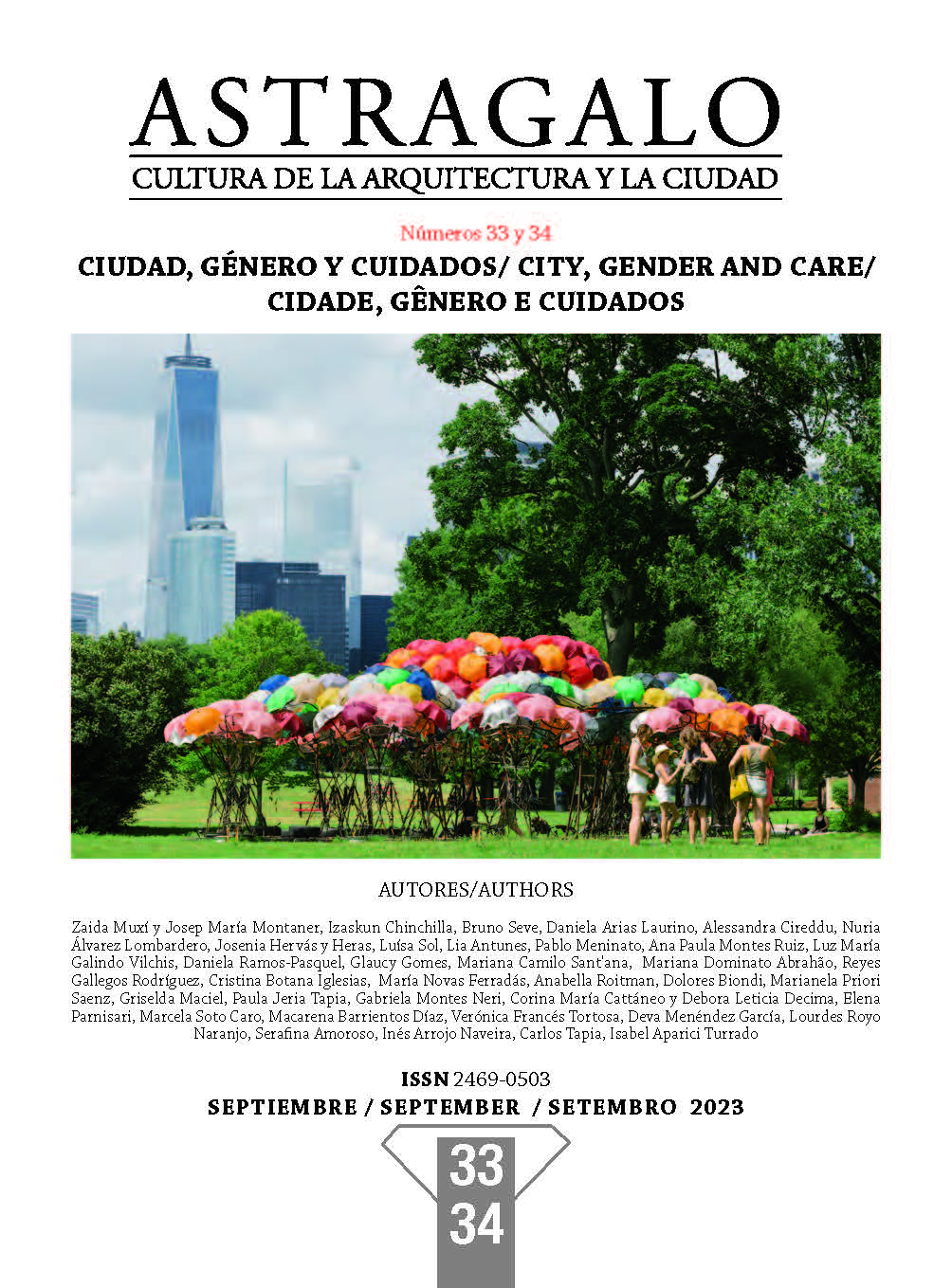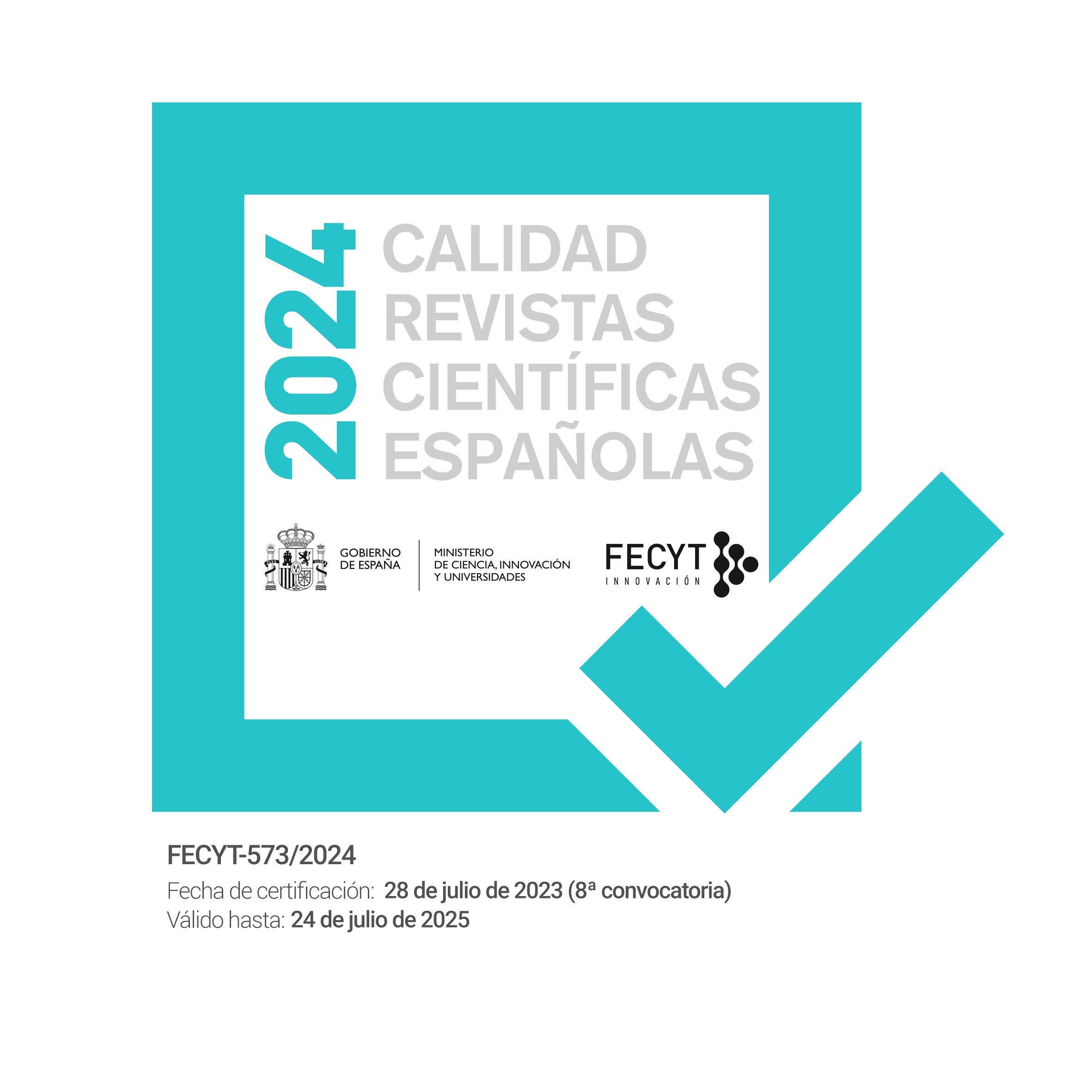Children's neighbourhoods. Women's urban laboratory to promote child participation in the Lagarteiro neighbourhood.
DOI:
https://doi.org/10.12795/astragalo.2023.i33-34.18Keywords:
social architecture, cities for children, urban laboratory, participation, women's teamAbstract
The article developed within the framework of Elena Parnisari's doctoral thesis in architecture aims to present the methodology applied in the case study, to highlight the cooperation work developed between different actors from diverse disciplinary areas and the strong female component that characterises it in order to promote fairer and more caring neighbourhoods. This work aims to investigate whether it is possible to formulate more inclusive urban policies based on exploring co-responsibility in social housing neighbourhoods by assuming children as indicators of urban inequality and as determinants of inclusive urban design. Between January and September 2022, two laboratories were developed in the social housing neighbourhoods Lagarteiro and Contumil, Porto, Portugal, by implementing urban diagnostic workshops. This paper presents the case of the Lagarteiro neighbourhood with nine activities made possible by an all-female interdisciplinary team of academics, members of associations and institutions and friends who joined the project, offering their work, availability and care to make it a reality. The project aims to involve and co-participate children and their mothers in urban design and public policies to create more inclusive spaces for all citizens, starting from a caring perspective of public space. The project’s main results highlighted in the article are the network created between local institutions, solidified by female solidarity when participating in a common project, and the responses obtained from children and their consequent emancipation with the topic.
Downloads
References
Este trabalho foi apoiado pela Fundação Portuguesa para a Ciência e Tecnologia (FCT).
Arup. 2017. Cities Alive. Designing for urban childhoods. edited by arup.com. London: Arup’s Foresight, Research and Innovation, Integrated City Planning.
Leite, Elvira, Pedro Bandeira, Susana Lourenço Marques, Lucia Almeida Matos, Joana Nascimento, and Sofia Victorino. 2019. Pedagogy of the streets, Porto 1977. Maiadouro: Pierrot Le Fou.
Milligan, Christine, and Janine Wiles. 2010. "Landscapes of care." Progress in Human Geography 34:736-754. doi: 10.1177/0309132510364556.
Sarmento, Manuel Jacinto , Natália Fernandes, and Catarina Tomás. 2007. "Políticas públicas e participação infantil." Educação, Sociedade & Culturas 25:183-206.
Sevilla, Juan, Diego Corrochano, Alejandro Gomez-Gonçalves, and Héctor Rato. 2021. "¿Es recuperable la ciudad como espacio para la infancia? Aproximación teórica desde la perspectiva del urbanismo social, participativo y sostenible." Ciudad y Territorio Estudios Territoriales LIII (207):77-94. doi: 10.37230/CyTET.2021.207.05.
Tonucci, Francesco. 1996. La città dei bambini. Bari: Laterza.
Valdivia, Blanca. 2018. "Del urbanismo androcéntrico a la ciudad cuidadora." Hábitat y Sociedad 11:65-84. doi: 10.12795/HabitatySociedad.2018.i11.05.
Downloads
Published
How to Cite
Issue
Section
License
Copyright (c) 2023 Elena Parnisari

This work is licensed under a Creative Commons Attribution-NonCommercial-ShareAlike 4.0 International License.


















